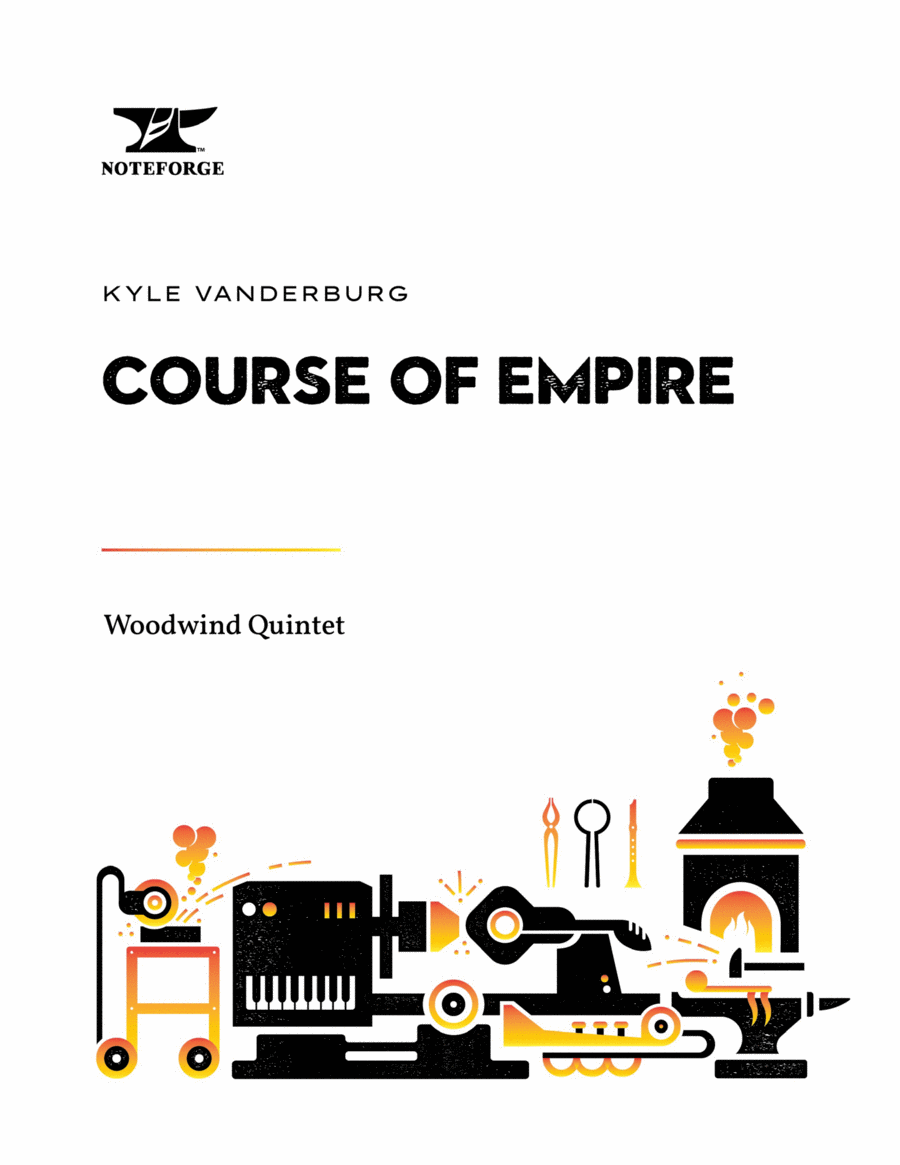Woodwind Ensemble,Woodwind Quintet Bassoon,Clarinet,Flute,Horn,Oboe - Level 5 - Digital Download SKU: A0.1448781 Composed by Kyle Vanderburg. 21st Century,Classical. 58 pages. NoteForge #1028595. Published by NoteForge (A0.1448781). Course of Empire takes its title and theme from a series of paintings by Thomas Cole. Over the course of these five paintings, an imaginary city rises and falls. A large boulder atop a cliff watches the scenes unfold: a wild and untamed landscape in the first painting; an agrarian, peaceful, arcadian state in the second; a decadent celebration in the third; the sack and destruction of the city in the fourth; and the ruins in the last.I tried to work unifying musical motives throughout the quintet. The first movement, The State of Nature, begins with a twelve-tone texture. There is no sense of tonal hierarchy or pitch center. The music is in a state of balance, adhering to a natural system not discernable to the listener. The bassoon introduces the main motive representing the cliff, a pastoral sort of hiccup.The second movement, Daydreams of Arcadia, begins with and develops the cliff motive, and has a more defined tonality. There is more action throughout the movement, as we’re led to the peaceful beginnings of civilization. The Empire motive, a series of syncopated chords, shows up toward the end of the movement: This is the beginning of the end, where our imaginary city makes the change from existing in harmony with nature to conquering it.The third movement, Fulfillment of Empire, begins with a cliff motive that has been added to, almost to the point of unrecognizability. Scenes of empire are shown musically, from a grand parade, to a show of naval forces, to the temple that occupies most of the painting. The Empire theme returns, expanded upon, but somehow sounding a little overextended.The fourth movement, The Fall, alternates between unfriendly chords (and noises) and the Empire motive. Every iteration of the Empire motive gets a little weaker, as the foundations of the civilization are destroyed. The movement ends with a lone flute.Movement five, Redemption, features some scenes that are familiar, but are now in ruins. The movement slips slowly back into the twelve-tone texture from the beginning. The Empire motive, or something like it, makes a brief appearance and passes through the ensemble, starting in the upper voices and sinking into the lower.
